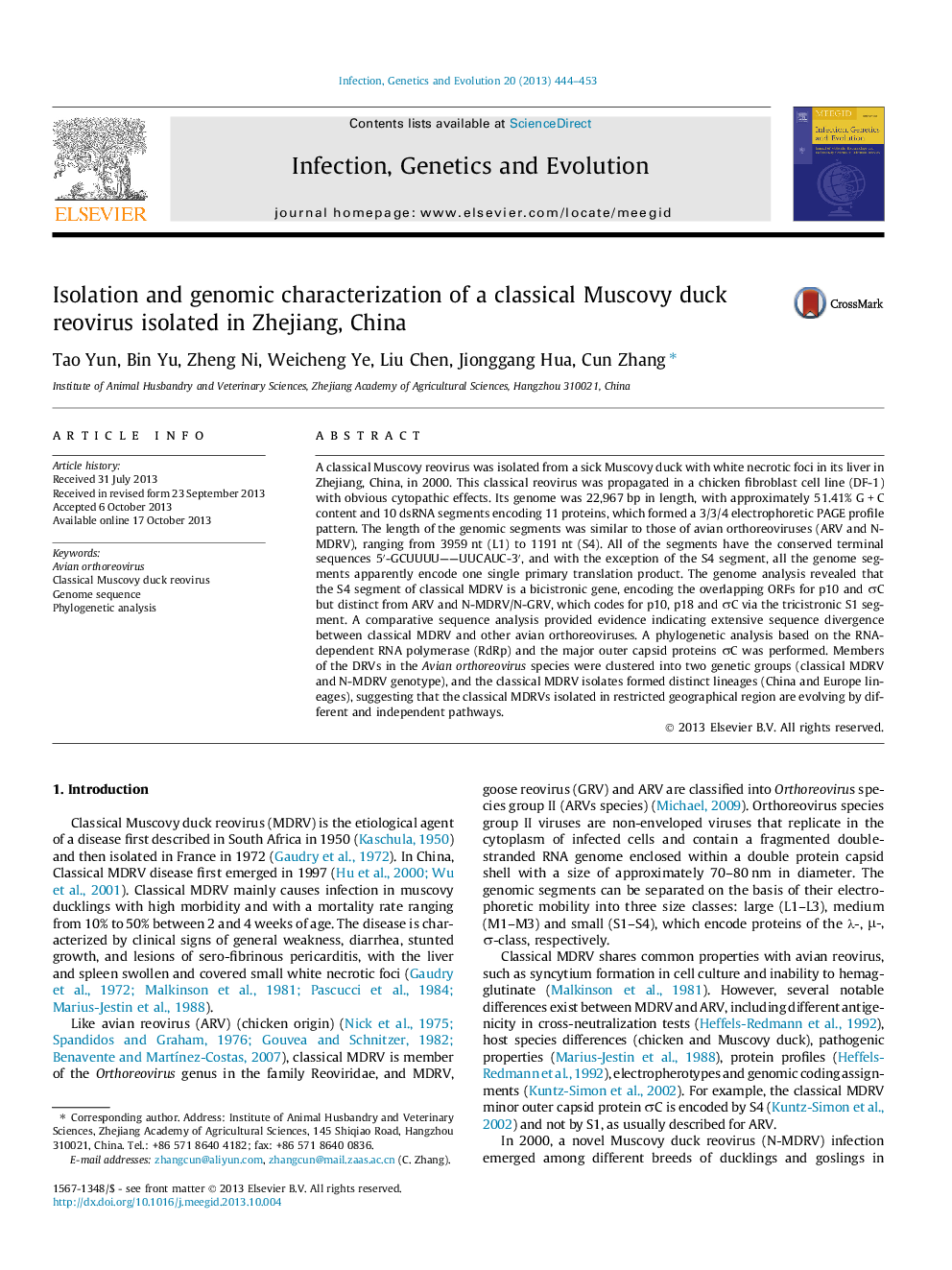| Article ID | Journal | Published Year | Pages | File Type |
|---|---|---|---|---|
| 5910047 | Infection, Genetics and Evolution | 2013 | 10 Pages |
â¢The full-length sequence and genetic traits of a classical MDRV isolates was determined and analyzed.â¢The classical MDRV isolates formed two distinct lineages (China and Europe lineages).â¢The classical MDRVs isolated in restricted geographical region are evolving by different and independent pathways.
A classical Muscovy reovirus was isolated from a sick Muscovy duck with white necrotic foci in its liver in Zhejiang, China, in 2000. This classical reovirus was propagated in a chicken fibroblast cell line (DF-1) with obvious cytopathic effects. Its genome was 22,967Â bp in length, with approximately 51.41% GÂ +Â C content and 10 dsRNA segments encoding 11 proteins, which formed a 3/3/4 electrophoretic PAGE profile pattern. The length of the genomic segments was similar to those of avian orthoreoviruses (ARV and N-MDRV), ranging from 3959Â nt (L1) to 1191Â nt (S4). All of the segments have the conserved terminal sequences 5â²-GCUUUU--UUCAUC-3â², and with the exception of the S4 segment, all the genome segments apparently encode one single primary translation product. The genome analysis revealed that the S4 segment of classical MDRV is a bicistronic gene, encoding the overlapping ORFs for p10 and ÏC but distinct from ARV and N-MDRV/N-GRV, which codes for p10, p18 and ÏC via the tricistronic S1 segment. A comparative sequence analysis provided evidence indicating extensive sequence divergence between classical MDRV and other avian orthoreoviruses. A phylogenetic analysis based on the RNA-dependent RNA polymerase (RdRp) and the major outer capsid proteins ÏC was performed. Members of the DRVs in the Avian orthoreovirus species were clustered into two genetic groups (classical MDRV and N-MDRV genotype), and the classical MDRV isolates formed distinct lineages (China and Europe lineages), suggesting that the classical MDRVs isolated in restricted geographical region are evolving by different and independent pathways.
